I plan to start breeding yellow clown gobies, and possibly greens in the future, I’m wondering if anyone has any success stories or experience with pairs spawning?
Any tips before I get into it?
Any tips before I get into it?
Follow along with the video below to see how to install our site as a web app on your home screen.
Note: This feature may not be available in some browsers.
Much appreciated!No, but wishing you the best of luck! (and a bump)
*Source:Doing a bit of research, it looks like rotifers are the recommended first food for similar Gobiodon (clown goby) species, so I'd recommend trying to culture some rotifers to start them off on (I'm not sure what strain of rotifers would be the best, but I'd start with small strain rotifers and try moving up size-wise from there if it doesn't work out). It looks like around day 14 post-hatch you'll want to start transitioning from rotifers to newly hatched Artemia nauplii (baby brine shrimp), and you should pretty well exclusively be feeding the Artemia nauplii by day 25. At some point they should start preying on available pods, but I'm not sure when (it wouldn't hurt to have some available in the tank). By day 40 post-hatch they should be ready to start on dried foods too. ...The only other thing I can think to add about the feeding is that you'll likely want to make sure you have another source of food readily available for the fry in case your culture crashes (i.e. have someone you can get more rotifers from that same day), ...
Beyond the food side of things, it looks like clown gobies will have the male (most likely the bigger of the two - they change sex as needed to ensure they can pair up) guard the eggs (so you can probably expect some aggression if there are other, small fish nearby in the tank, and you'd probably want to just protect the coral the eggs are on so other fish can't get to the eggs), and the eggs should hatch after 4-5 days. They typically lay the eggs on the host coral, and after about 33 days post-hatching the fry will undergo metamorphosis and start perching (typically) on the aquarium walls. They should start coloring up around day 40 post-hatch. After about day 40 they should also be large enough to go find their own coral perches. As a reminder for while the fry are young, you'll need to keep the fry safe from the mechanical pieces (filters, powerheads, etc.) of the tank, and you'll need to be careful while doing water changes not to remove them. Obviously, you'll need to maintain good water quality throughout the rearing process as well.
On the breeding side of things, the bigger (and emptier/safer) the tank, the more likely the broodstock (parent fish) will be to breed. As long as they are comfortable enough, though, they should still (at least theoretically) breed fairly regularly in just about any size of tank. Twenty gallons might be a bit on the small side, so don't be too discouraged if they don't breed super readily/regularly (I've seen recommendations from 30+ gallons all the way up to 100+ gallons). One source mentioned that you might be able to trigger a spawning event for them by raising the temperature a couple of degrees (keeping it in a safe, not detrimental to the tank range), but, again, as long as the conditions are good enough and peaceful enough, they should still spawn unprompted.
Hope this helps, and good luck!
Thank you sooo much!! This is super helpful! Im compiling every source I can possibly find on information haha. Thankfully pairing them is the easiest part, i just got in two last night at work to see how well they pair and they’re already courting today."Larvae of clown gobies and Paragobiodon spp. are generally smaller than cleaner gobies and may require live feed organisms of a smaller size (smaller than 180 μm) (Wittenrich 2007; Calado 2017). Additional studies have shown increased survival rates during first feeding using small ciliates (Euplotes spp.), rotifers (B. rotundiformis), and enriched brine shrimp (Olivotto et al. 2005). As the larvae begin to grow, they can be gradually transitioned from smaller plankton to larger brine shrimp at about 7 days post hatch (DPH). The feeding regimen should have an overlap or "weaning" period that includes both types of live feed so that smaller individuals do not starve. As growth and development of the larvae continue, they can be weaned from live feeds to commercial microparticulate larval feeds. These commercial diets are normally introduced around the time of settlement."*
"Although captive spawning is a regular occurrence in Gobiodon species, raising the small fry seems to be less than easy. Obtaining a pair is simply a matter of obtaining two of the same species, since they will change sex to become a mated pair. Once mated, the female will attach circular bands of eggs around the branches of their preferred coral. The male immediately fertilizes and guards the eggs. The egg mass, that can contain up to 1000 eggs, hatches on the evening of the fourth or fifth day. Rotifers should be the first food offered to fry, with a possible transition to newly hatched Artemia nauplii around day 25. Around day 33, the fry go through a metamorphosis, settle, and begin to perch on the sides of the aquarium's glass. Their first coloration has been noted to occur on day 40 (Breeder's Registry)."**
*Source:
**Source:FA226/FA226: Aquaculture Applications of the Family Gobiidae
University of Florida, Institute of Food and Agricultural Sciences Extension outreach is a partnership between state, federal, and county governments to provide scientific knowledge and expertise to the public. The University of Florida (UF), together with Florida A&M University (FAMU)...edis.ifas.ufl.edu
Glad to hear it's going well so far - I love projects like this, so please keep us updated on your efforts going forward!Thank you sooo much!! This is super helpful! Im compiling every source I can possibly find on information haha. Thankfully pairing them is the easiest part, i just got in two last night at work to see how well they pair and they’re already courting today.
I will definitely keep the thread updated! My tank at home isnt ready yet so if this pair sells I’ll order another until I can take them home and actually begin trying to rear the larva. Interesting to watch their behaviour with eachother.Glad to hear it's going well so far - I love projects like this, so please keep us updated on your efforts going forward!
How are they courting ? Can you describe pleaseThank you sooo much!! This is super helpful! Im compiling every source I can possibly find on information haha. Thankfully pairing them is the easiest part, i just got in two last night at work to see how well they pair and they’re already courting today.
They would swim up together into the water collumn and kind of spin around eachother, then they would move close and shake their anal and pectoral fins. There was a lot of raising their little dorsal fins. I will try to get a video in the future as I’m describing it very poorly.How are they courting ? Can you describe please


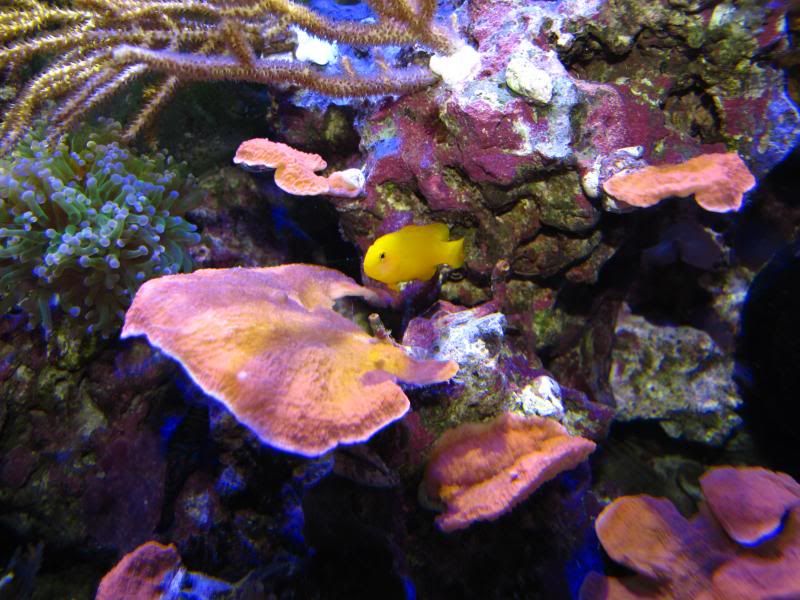
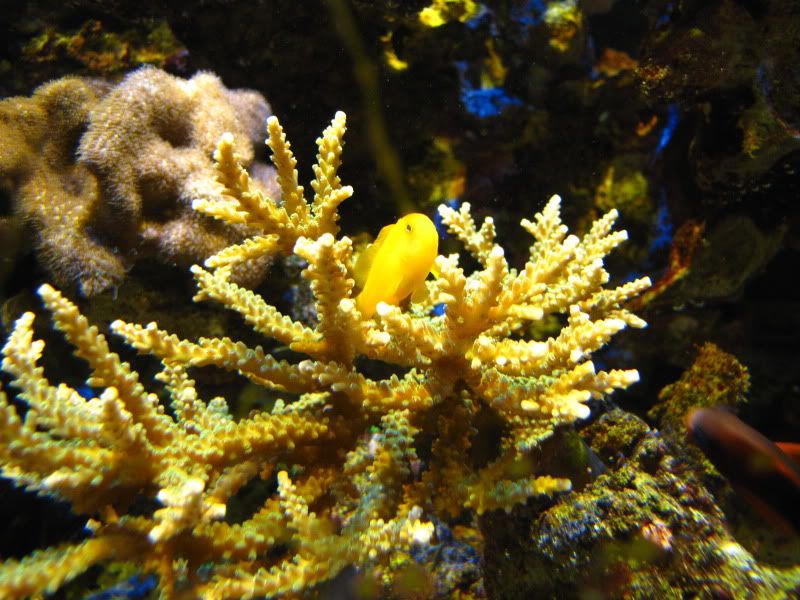
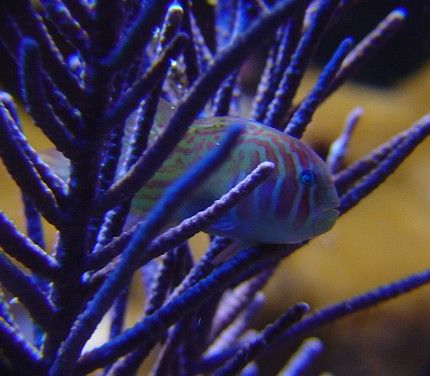
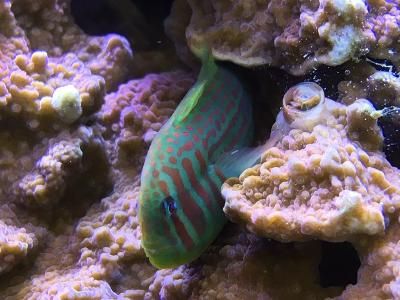
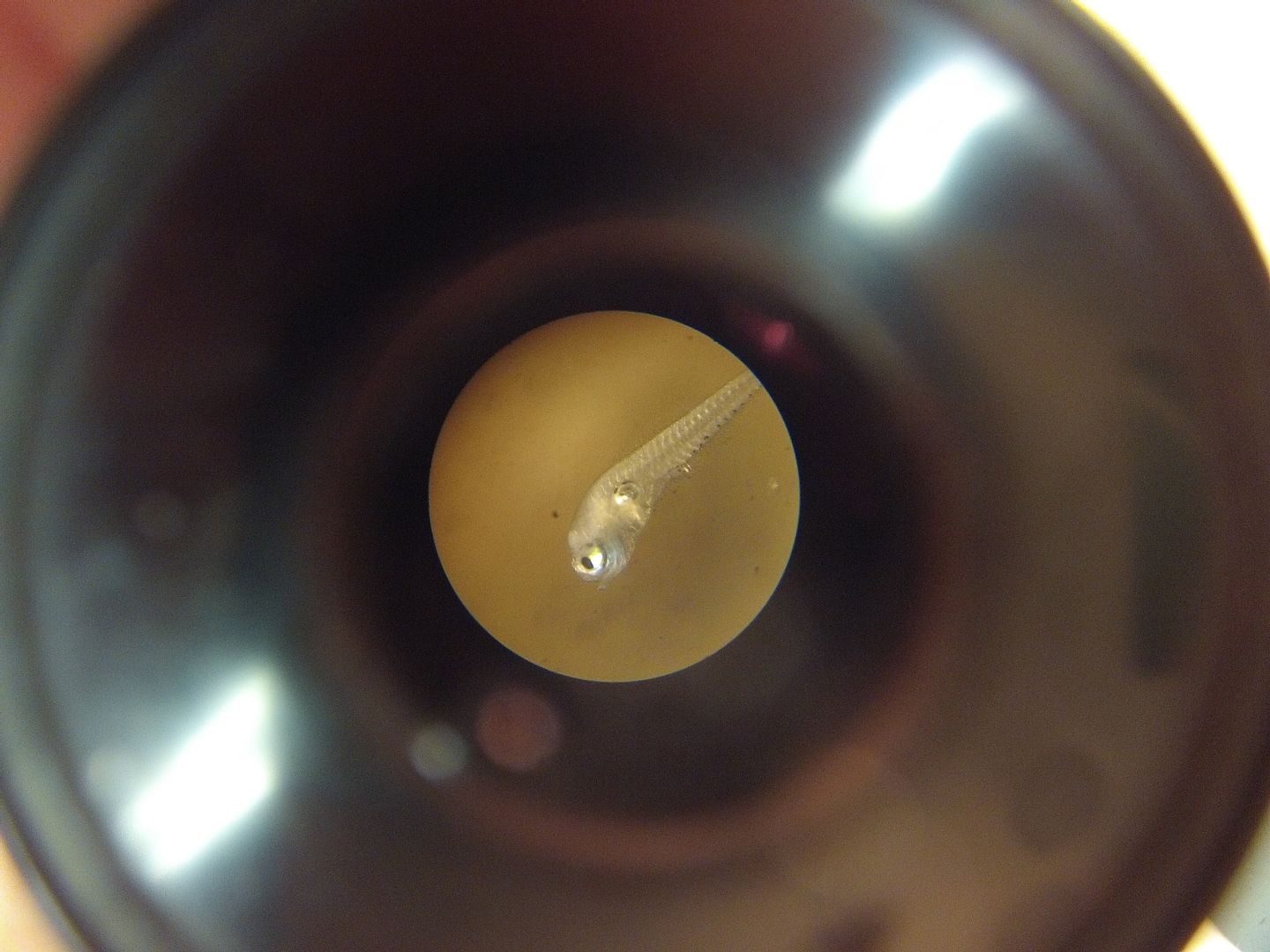
I saw this but didnt know if they were attacking each other or courtingThey spawn constantly and are kind of annoying as they lay eggs all over acropora and kill it.
You can see her eggs here just over her.
They eventually killed all my acropora.
You can see the white, dead parts of the acro here from their eggs.
Put two together and they will spawn. Give them tiny food like pieces of clams or whiteworms.
I think I have 5 of them now.
Along with some greens and grays.
Here is one of their babies.

Do they still lay eggs on the dead skeletons, or do they move to healthy acros once they kill one? I want to breed a lot of these guys and i dont feel like spending hundreds on live acros, but i have a small hoarded collection of all the SPS skeletons ive killed over the last year (I’ve gotten way better with them lol). Im also going to order some realistic fake ones and cross my fingers they’re not that smart. Also have your greens or grays spawned? Or just the yellows?They spawn constantly and are kind of annoying as they lay eggs all over acropora and kill it.
You can see her eggs here just over her.
They eventually killed all my acropora.
You can see the white, dead parts of the acro here from their eggs.
Put two together and they will spawn. Give them tiny food like pieces of clams or whiteworms.
I think I have 5 of them now.
Along with some greens and grays.
Here is one of their babies.

Dang, they probably wont like skeletons then. I might try similar corals of cheaper variety/faster growth and see if they spawn on thoseThey lay their eggs on healthy tissue, then it dies and they move to another living spot for their next spawn.
